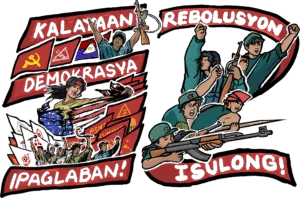By CPP Information Bureau
Before Typhoon Yolanda (international name Haiyan) swept through the Philippines, the Communist Party of the Philippines enjoined all revolutionary forces in areas along the supertyphoon’s path to mobilize the people and bring them to safer ground. Attending to the people’s well-being, New People’s Army units and people’s militia units organized a mass evacuation, giving priority to young children and the elderly.
NPA units, local Party branches and mass organizations immediately mobilized the people in order to assess the damage and plan out an appropriate course of action to address urgent needs. A communication and transportation network was immediately established in order to seek relief goods and other material assistance from local mass organizations as well as international and local relief agencies.
Disaster survivors are victims of a grave injustice. They are victims of the Aquino regime’s failure to put into place sufficient disaster-prevention measures. They are victims of corruption in so-called welfare agencies. They are victims of the oppressive and backward system that fails to provide them jobs, just wages and sufficient livelihood. It is the oppressed and exploited classes who suffer grave economic hardships after any disaster.
The struggle of the disaster survivors forms a growing aspect of the national democratic mass movement as the ruling semicolonial and semifeudal system continues to deteriorate rapidly.
In commemoration of the one-year anniversary of the 8 November 2013 tragedy, Sine Proletaryo is releasing the video documentary, Yolanda: Overcoming calamity through revolution. The video, produced in cooperation with Talutang Productions of Eastern Visayas and Pulang Madyaas Productions of Panay Island, features interviews with Red fighters of the New People’s Army, members of the Communist Party of the Philippines, and leaders of revolutionary mass organizations, as well as footages of NPA teams taken during and after the storm.
It explores how revolution is waged amid the calamity in the guerrilla fronts in Eastern Visayas and Panay island, in central Philippines.
